acronym: a word formed by using the initial letters of other words
radar (radio detecting and ranging)
acute: an accent mark
café
alliteration: repetition of initial sounds in two or more syllables or words
![]()
alphabetic reference: text listed in alphabetical order, such as a dictionary, index, or glossary.
analogies: comparisons of words
a leaf is to a tree as a page is to a book
arabic numbers: numbers written as 1, 2, 3, 4, 5, 6, 7, 8, 9, 0
asterisk: print symbol * often used as a footnote or reference indicator
attribution: identification of the source or author of the material
Ask Not What Your Country Can Do For You
—Inaugural Address by John F. Kennedy, January 20, 1961
author segment: portion of braille title page with information concerning author(s)
authorized entity: a nonprofit organization or governmental agency having a primary mission to provide specialized services related to training, education, or adaptive reading or information access needs of the blind or other persons with disabilities
back matter: the material following the main body of the text; it may include, but is not limited to, a bibliography, glossary, and index
bar graph: a diagram showing information using vertical or horizontal bars
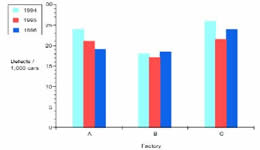
bibliography: a list of books, magazine articles, stories, and other resources used in the writing of the text

blank line: a line with no braille on it between lines of braille
blank space: a cell with no braille in it
blocked paragraph: a paragraph with no indent
body matter: the main text, including state-mandated materials and extra explanatory material
boldface: a font attribute used for emphasis
braces: enclosure symbols, { }
Get your book {history, science, health} and follow me.
brackets: enclosure symbols, [ ]
Get your book [history, science, health] and follow me.
breve: an accent mark indicating a short vowel
![]()
bullet: print symbol • often used at the beginning of a list item; may appear also with another shape, such as a triangle ![]() or diamond
or diamond ![]()
caesura: double vertical lines representing a break in poetic meter
To err is human; || to forgive, divine.
capitalization indicator: the composition sign indicating the next braille character is capitalized
caret: a print proofreading symbol indicating letters or words are to be inserted
![]()
cedilla: an accent mark with a hook below the letter
François
chart: method of visually representing information, such as a pie chart, bar chart, and line chart
circumflex: an accent mark, often called a caret
brôt
column entry: intersection of rows and columns
commentaries: material inserted to explain or elaborate on the text, often in a biblical context
Introduction to Psalm (Matthew Henry's Concise Commentary)
David was the penman of most of the psalms, but some evidently were composed by other writers, and the writers of some are doubtful. …
composition indicators: symbols used in braille to indicate font attributes or give the following character special meaning, e.g., number, accent, etc.; there is no corresponding print symbol
compound hyphen: 33 (25, 25) used when compound words are divided between the two component words
compound word: a word composed of two or more words; specifically, two or more words joined together by a hyphen
concept map: a visual arrangement of material to show relationships
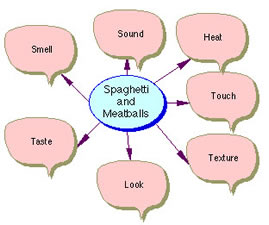
consumable material: pages intended to be written on by the student
contracted braille: transcription which uses contractions for letter combinations or words
credit lines: identification of the source or author of the material (see attribution)
cross-reference: reference directing the reader to another location in the same book
declension: listing of a verb in all its forms, such as past and present
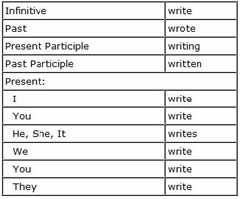
definition segment: includes the part-of-speech label, definition, descriptions, examples, etc.
diacritic hyphen: 3 (25), used to show syllable division in diacritic pronunciation; used when a hyphen is in contact with a dash; used in place of a compound hyphen
diacritic mark: a symbol which shows the pronunciation of a letter, such as the breve and acute
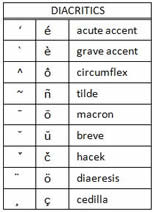
diaeresis: two dots placed over a vowel to indicate that the vowel is pronounced as a separate syllable
naïve, Brontë
diagramming: linear diagramming shows sentence structure on one line, using font attributes to distinguish parts of speech; spatial diagramming shows sentence structure using visual cues such as horizontal, vertical, and diagonal lines
digraph: two successive letters which indicate a single sound
ea in bread
diphthong: a sound made by two vowels that seems to be pronounced without hesitation between the vowels
oy in toy
directions: instructions given to the student concerning material immediately following the instructions
Write the same words without endings in the second column.
directive sentences: similar to directions, but not followed by an activity in the book to be completed
Ask your grandparents about a significant world event in their life.
double dash: ---- (36, 36, 36, 36) same as omission dash
elision: the omission of a letter, or shortening of a word, e.g. comin' for coming
emphasis: accentuation of a word or words using color or attributes such as bold, underlining or italics
ellipsis: a symbol which shows the omission of a word or words, or numbers in a series ...
em dash: a typographic dash, which is supposed to be as wide as an "m" (can vary between fonts), but frequently is twice as wide as an en dash; used as a break between two thoughts
She is—according to her brother—a geek.
en dash: a typographic dash the width of an "n"; typically used as a range in numbers
It will be 14–16 days before the application can be processed.
enclosure symbols: any symbols that come in pairs, such as quotation marks, parentheses, brackets, braces
endnotes: footnotes (references) compiled at the end of a chapter, section, or book in print
entry: a word or phrase, and all its accompanying information, in an alphabetical listing
entry-word segment: a word(s), its respelling, and its pronunciation
enunciate: to pronounce, articulate; to state or set forth precisely or systematically
enunciate a doctrine
epigraph: a quotation, with or without quotation marks, at the beginning of a chapter or unit which sets the theme of the section
"Persons attempting to find a motive in this narrative will be prosecuted; persons attempting to find a moral in it will be banished; persons attempting to find a plot in it will be shot."
—From Huckleberry Finn
exercise set: the complete assignment, which includes directions, examples, questions, and answer choices
expendable materials: classroom worksheets, etc., meant to be discarded after completion
flowchart: diagram showing the step-by-step progression through a procedure or system, using connecting lines and symbols
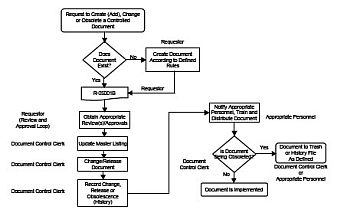
font: a specific size and style of a typeface
Times New Roman, 14 pt, bold
Arial, 14 pt, italic
Courier New, 14 pt
,sim,brl1 #ad pt (SimBraille 14 pt)
font attribute: the look of the print letter, e.g., boldface, italics, color, underlining, etc.
footnote: an explanation or comment about a word or phrase; also called a reference in braille
front matter: the print preliminary pages, e.g., dedication, table of contents, and other material not included with the main body of the text
guide words: in print, words usually at the top of a dictionary page listing the beginning and ending word on the page or facing pages. In braille, words centered on the last line listing the beginning and ending words on the page
guillemet: either of the marks « or » used as quotation marks in French
highlighting: using a colored background to emphasize a word, phrase, sentence, etc.
hyperlink: a word, phrase, or image that can be clicked on to jump to a different location
idea web: see concept map
incidental note: a note directing the reader to another source, e.g., an accompanying handbook, a website, etc.
IPA: International Phonetic Alphabet; used by linguists to show exact pronunciations
ISO: International Organization for Standardization; sets the standards for state and country abbreviations
italics: font attribute used for emphasis
Latin alphabet: the alphabet that is the direct derivation of the alphabet first used to write Latin
letter indicator: the braille composition indicator which indicates the following character is a letter
liaison: the upper ![]() or lower
or lower ![]() tie bar symbol, connecting two letters
tie bar symbol, connecting two letters
![]()
libretto: lyrics without the musical notation
ligature: connected print letters
encyclopædia
line graph: a diagram of connecting lines between data points

lower-case letters: uncapitalized letters, a b c d e
macron: an accent mark indicating a long vowel
āpe
marginal notes: marked or unmarked word definitions, which have a specific location and direct relationship with an element of the text on that page, or possibly the previous/next page in some situations
middle hyphen: see diacritic hyphen
nested list: a multi-level list, e.g., questions/answers, table of contents, poetry, etc.
NIMAS: National Instructional Materials Accessibility Standard, which is the technical standard K-12 textbook publishers use to produce source files that may be used to create specialized formats, such as braille, for students with print disabilities
note separation line: a line used to separate regular text from notes at the bottom of the print page; "333333 (5, 25, 25, 25, 25, 25, 25)
number indicator: the braille composition symbol which indicates the next braille character is a number
numbered lines: lines in prose or poetry that are numbered in print, either in the left or right margin; in braille, every print line is numbered in prose; print numbering is followed for poetry (verse)
oblique stroke: slash
either/or
omission dash: ---- (36, 36, 36, 36) same as a double dash
organizational chart: a chart showing areas of responsibility, usually with the most important person or thing at the top
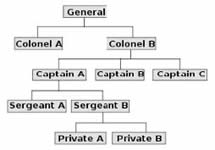
page information line: used as the last line on the braille page to indicate the first and last page entries, e.g., guide words in an alphabetic reference, outline numbers, etc.
page tab: a print indication of what is on the page; it may be numbers or words and is usually along the outside edge of the page in a tabbed layout
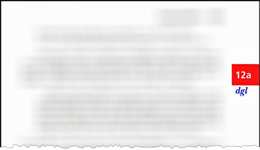
paragraph heading: generally an indication of the subject of a paragraph; text in a different font at the beginning of a paragraph
partial table of contents: a short table of contents at the beginning of a unit or chapter
pie chart: a diagram showing information using sections of a circle
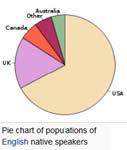
poetic line: a unit of verse ending in a visual or typographic break and generally characterized by its length and meter
poetry: a form of literary art in which language is used for its aesthetic and evocative qualities in addition to, or in lieu of, its apparent meaning
primary stress mark: the larger or darker of the stress marks used to indicate the pronunciation of a word
prose: ordinary speech or writing, without metrical structure
publisher and copyright segment: portion of braille title page with the publisher and copyright information
pull quote: quotation or excerpt from an article that typically is placed in a larger or distinctive typeface on the same page, serving to entice readers into an article or to highlight a key topic (Wikipedia)
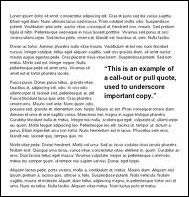
puzzle grid: a puzzle pattern with open and filled-in squares
roman numerals: numbers written as i, ii, iii, or I, II, III
run-in headings: headings that are shown at the beginning of a paragraph, i.e. paragraph headings
running footer: a word, phrase, or number that is repeated at the bottom of more than one print page
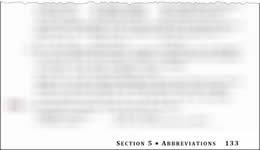
running head: the title of the book, centered on line one of each braille page
running header: a word, phrase, or number that is repeated at the top of more than one print page, such as Chapter 11 Nouns
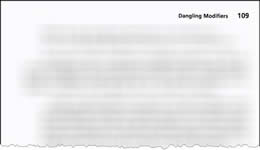
scansion: the metrical analysis of verse
secondary stress mark: the smaller or lighter of the stress marks used to indicate the pronunciation of a word
separation line: in tables, the line separating the column headings from the cell entries; in footnotes, the line separating the footnotes from the body of the text
shared poetic line: two or more short lines of poetry that, together, are a complete line in the rhyme scheme or layout of the poem
sidebar: a typographically distinct section of a page, as in a book or magazine, that amplifies or highlights the main text
source citations: identification of the source or author of the material (see attribution)
stairstep table: a braille format for a wide table, using a stepped format (1-1, 3-3, 5-5, etc.) for each cell entry
STEM: description guidelines for Science, Technology, Engineering, and Math content; helpful for writing transcriber's notes http://ncam.wgbh.org/experience_learn/educational_media/stemdx/guidelines
stress marks: primary, secondary, and tertiary marks indicating syllable stress
subentry: an entry that is indented further than the main entry
subject-specific table of contents: a table of contents arranged by subject or type of material
sub-subentry: an entry that is indented further than the subentry
summary table of pronunciation: table in the running footer at the bottom of each print page or alternate print page
swung dash: symbol for a dash which resembles a tilde, ~
syllable stress: a syllable with a stress mark before or after the syllable; if there is more than one stress mark, the darker or larger of the two is the primary stress, and the lighter or smaller is the secondary stress
table: a chart in which the information is arranged in columns and rows

table of pronunciation: the key to the pronunciation symbols used in print
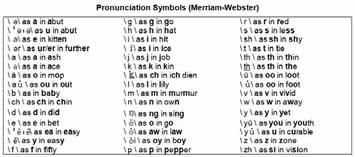
termination indicator: a braille composition sign which stops previous composition signs, such as italics, and boldface; can also be used to indicate the end of a color indicator
tertiary stress: rarely used third level of syllable stress
tilde: an accent mark, ~, frequently over the letter n
señor
time line: a vertical or horizontal listing of points of information, such as historical dates and events

title case: capitalization of the first and last words in titles and subtitles and all other major words (The Chicago Manual of Style, 16th ed. The Univ. of Chicago Press, 2010)
title segment: portion of braille title page with book title information
transcriber's note: information inserted by the transcriber
transcriber/transcription segment: portion of braille title page concerning the transcriber and his/her location and affiliation
typeface: set of characters of the same design, including letters, numbers, punctuation marks, and symbols; popular typefaces are Arial, Helvetica, Times, and Verdana (Verdana is a typeface, Verdana 12 pt bold is a font)
umlaut: a diacritical mark with two dots placed over a vowel to indicate a more central or front articulation
älter
uncontracted braille: transcription which uses none of the braille contractions and is transcribed letter for letter
uppercase letters: capitalized letters A B C D
Venn diagram: overlapping shapes (typically circles) used to show differences and similarities
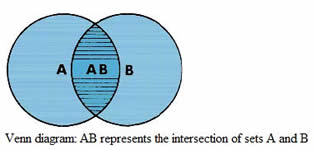
volume segment: portion of braille title page that states information about the volume: number, paging, etc.